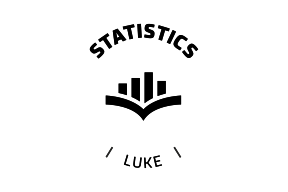Smaller Baltic herring catch but a higher price for commercial fishers in 2024
In 2024, the commercial marine fishery catch totalled 72 million kilos, showing a decrease of 17 million kilos from the previous year, mainly due to smaller Baltic herring and sprat catches. The catch of many species fished in coastal areas such as perch, pikeperch and European whitefish increased. The producer value of sprat was EUR 36 million, while Baltic herring and sprat were the most significant species financially.
Fishing regulation reduced the Baltic herring catch
The most important catch area for Baltic herring was the Bothnian Sea, whereas sprat was fished in the Gulf of Finland and the Baltic Proper.
“Similarly to cod and salmon, Baltic herring and sprat have fishing quotas, defining an upper limit for their catches. Their fishing is also regulated by regional and seasonal restrictions to protect sustainable fishing,” says Pirkko Söderkultalahti, Senior Statistician at the Natural Resources Institute Finland (Luke).
Due to the reduced state of the Baltic herring population in the Gulf of Bothnia, a considerably smaller catch quota was set for Finland in 2024, which reduced the fishing of Baltic herring. In addition, the sprat quota was smaller than in the previous years, restricting its fishing. The majority of the Finnish Baltic herring catch is exported. More than half of the Baltic herring catch landed in Finland was exported fresh or frozen, and 16 per cent of the catch was landed directly abroad. Salmon and cod catches remained smaller than normal, and their quotas were not reached. The salmon catch was 105,000 kilos and the cod catch was 18,000 kilos. Both catches were smaller than ever before in the time series starting from 1980.
Coastal fishery catch increased
The majority of commercial fishers caught perch, pike and other edible fish using gillnets or traps and vendace using trawlers close to coastal areas.
“The vendace catch in the Bothnian Bay was record-high for the third year in succession, totalling 605,000 kilos,” says Söderkultalahti.
The vendace catch started to increase at the beginning of the 2000s, with last year’s catch being already six times larger. Vendace was mainly caught for roe which can be seen in the catch value. The smelt catch in the Bothnian Sea and the Archipelago Sea was high at 2.6 million kilos. The perch and roach catches were also larger than average at 993,000 and 701,000 kilos respectively. The long-term decrease in the pikeperch catch seems to have stopped, with the catch being 277,000 kilos. The European whitefish and trout catches increased slightly from 2023, while still being below average.
Fishing has decreased
In addition to the quotas, the total catch was affected by the state of fish populations, fuel costs, demand for fish, disturbance caused by seals and cormorants, and the fishing effort. The number of fishing days has decreased significantly in all types of fishing during the 2000s.
Producer price for Baltic herring continued to rise
In 2024, the producer price was EUR 0.52 per kilo for Baltic herring for human consumption landed in Finland and EUR 0.33 per kilo for industrial Baltic herring. The producer price for Baltic herring for human consumption increased by 21 per cent from the previous year and that for industrial Baltic herring by 22 per cent.
“There has been a clearly more distinctive upward trend in the producer price for Baltic herring than in the price of key species fished in coastal areas. During the last five years, the nominal producer price for Baltic herring has almost doubled, whereas the prices of other fish species have increased more slowly,” says Senior Statistician Miikka Husa.
In 2024, the nominal producer prices for perch for human consumption and burbot were even lower than five years ago.
Background to the statistics
The media release covers the statistics on commercial marine fishery and producer prices for fish. The statistics are based on data collected by the Southwest Finland Centre for Economic Development, Transport and the Environment (ELY) and the Provincial Government of Åland for the central national register on commercial fishery. All commercial fishers are obliged to report their catches by the deadline. Data on fish producer prices are based on notifications submitted by first buyers of fish. From 2022, the data are more comprehensive, also including fish purchased for use as feed.




